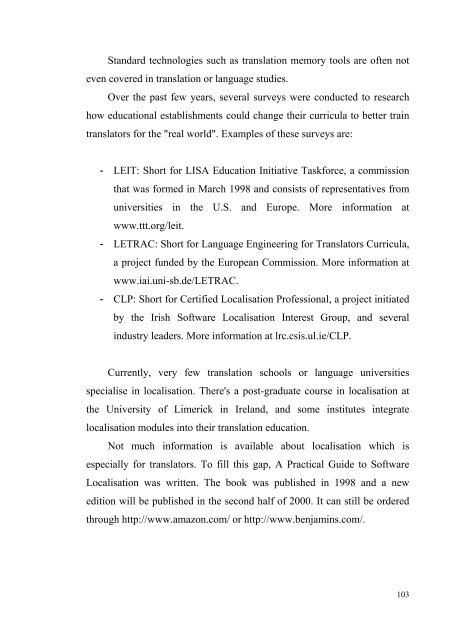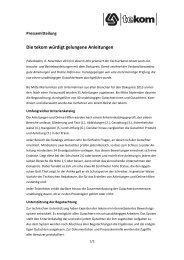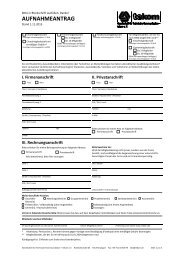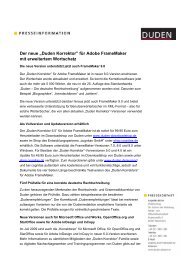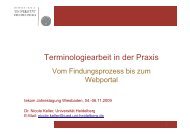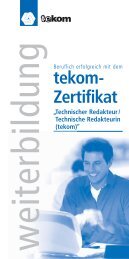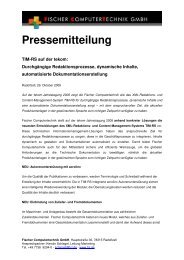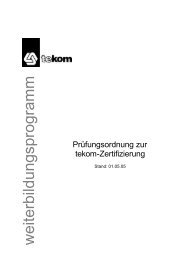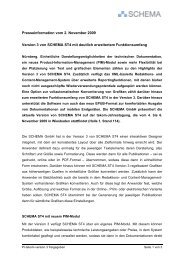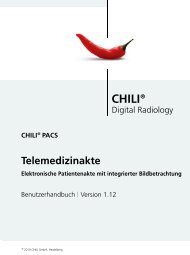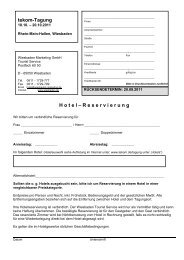qui - Tekom
qui - Tekom
qui - Tekom
You also want an ePaper? Increase the reach of your titles
YUMPU automatically turns print PDFs into web optimized ePapers that Google loves.
Standard technologies such as translation memory tools are often not<br />
even covered in translation or language studies.<br />
Over the past few years, several surveys were conducted to research<br />
how educational establishments could change their curricula to better train<br />
translators for the "real world". Examples of these surveys are:<br />
- LEIT: Short for LISA Education Initiative Taskforce, a commission<br />
that was formed in March 1998 and consists of representatives from<br />
universities in the U.S. and Europe. More information at<br />
www.ttt.org/leit.<br />
- LETRAC: Short for Language Engineering for Translators Curricula,<br />
a project funded by the European Commission. More information at<br />
www.iai.uni-sb.de/LETRAC.<br />
- CLP: Short for Certified Localisation Professional, a project initiated<br />
by the Irish Software Localisation Interest Group, and several<br />
industry leaders. More information at lrc.csis.ul.ie/CLP.<br />
Currently, very few translation schools or language universities<br />
specialise in localisation. There's a post-graduate course in localisation at<br />
the University of Limerick in Ireland, and some institutes integrate<br />
localisation modules into their translation education.<br />
Not much information is available about localisation which is<br />
especially for translators. To fill this gap, A Practical Guide to Software<br />
Localisation was written. The book was published in 1998 and a new<br />
edition will be published in the second half of 2000. It can still be ordered<br />
through http://www.amazon.com/ or http://www.benjamins.com/.<br />
103


